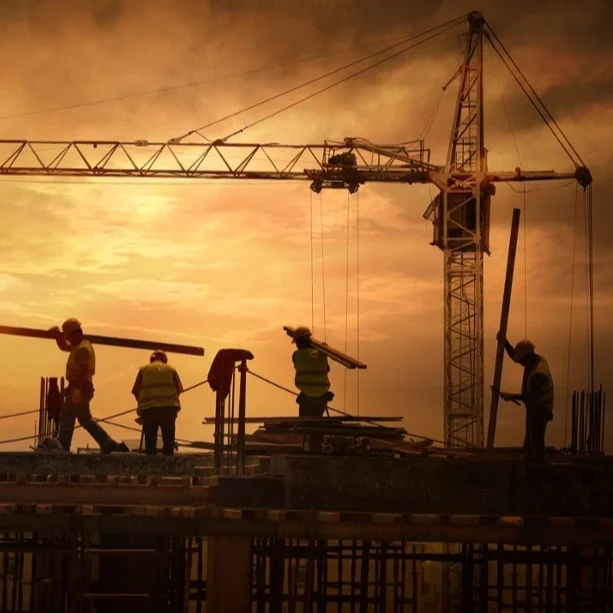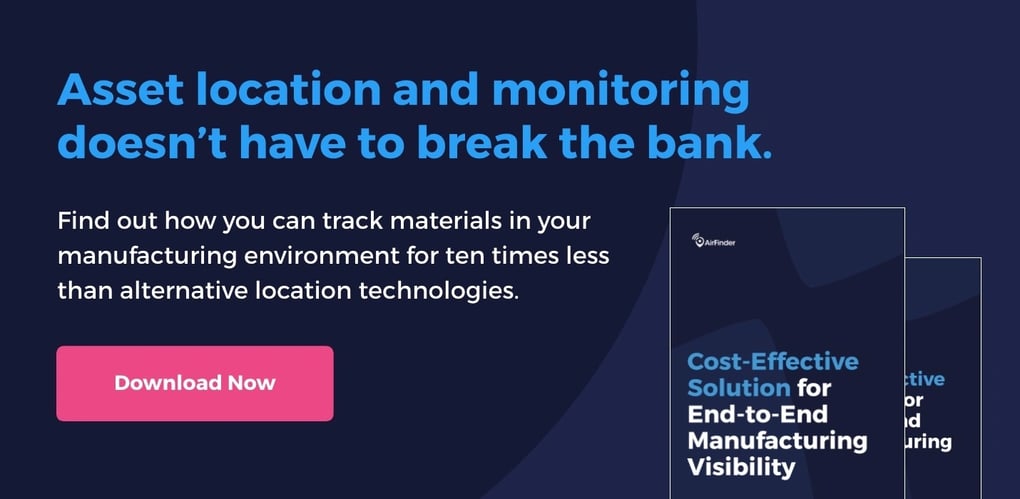Whether you’re an equipment rental company, a contractor, or a subcontractor, location tracking technology in construction can come in handy. It can be used to keep track of your tools, monitor equipment usage, optimize tool leasing, support employee safety, and much more. Below we’ve outlined seven interesting ways construction-based organizations are currently integrating small equipment tracking devices into their workflow.
Innovative Construction Equipment Tracking Use Cases
- Prefab Tracking: Contractors often build prefabricated elements (trusses, beams, etc.) off-site and then move those pieces to the construction yard when they’re needed. Using a system like AirFinder, you can track prefab pieces starting from the time they’re created through the shipping process, and even after they’ve been delivered to the construction site. You can also get an alert when the piece is moved in the yard, which could indicate whether you’re on target for install.
- Process Optimization: General contractors typically work with very thin profit margins. If costs are 1% too high they could lose money, just as their profit margin could double with a 1% cost reduction. Location data can be used to optimize processes, which can have major implications for the company’s bottom line. For example, a contractor could use AirFinder to monitor the time spent running each scissor lift on a job site. If 10 are being rented for a period of 8 weeks but only 6 are used frequently, they can update future rental agreements to cut costs.
- Theft Monitoring & Prevention: Unfortunately, theft is common at construction sites. Small equipment tracking devices like AirFinder can help you immediately identify if something is moved during off-hours, and determine if the location the tool was left at made it an easier target for the theft. Additionally, Bluetooth or GPS equipment tracking tags help act as a theft deterrent.
- Environmental Data Tracking: If some materials at your construction site need to stay within a certain temperature or humidity range, you can use AirFinder sensors to monitor the environment, helping to avoid damage or loss. For example, poured concrete must remain in a certain temperature range, and sheetrock can only be installed in certain temperature ranges.
- Personnel Safety Tracking: Keeping personnel out of certain areas can be imperative to their safety. By integrating location tracking technology into employee and visitor badges, you’ll be able to alert anyone entering a restricted area via SMS so they can avoid that part of the construction site. Additionally, should you need to evacuate all or part of your construction site for some reason, you can use a system like AirFinder to ensure all employees and personnel are safe and accounted for.
- Workforce Optimization: Are employees or subcontractors regularly taking too-long routes to travel around the job site? Using location data, you can update workforce routes to save time—and ensure your future sites are optimized to take these things into consideration as well.
- Tool & Equipment Usage Monitoring: There are several good reasons to gather usage data via small equipment tracking devices:
- Contractors can be better prepared when tool and equipment maintenance or replacement becomes necessary.
- Equipment rental companies could charge customers based on usage rates, not time periods.
- Subcontractors who bring their own tools to a construction site can monitor their location, and make sure they don’t accidentally end up in another subcontractor’s toolbox (or offsite).
Ready to get started with construction equipment tracking?
AirFinder’s small equipment tracking devices enable low-cost, secure asset tracking. If you’re ready to begin collecting the kind of data described in the use cases above—and seeing the impact of that data on your bottom line—contact us.





